Algal Biodiversity of Nine Megaliths in South-East Bulgaria
Abstract
:1. Introduction
2. Materials and Methods
3. Results
4. Discussion
5. Conclusions
Author Contributions
Funding
Data Availability Statement
Acknowledgments
Conflicts of Interest
References
- Hofbauer, W.K.; Gärtner, G. Microbial Life on Façades; Springer Spectrum: Berlin/Heidelberg, Germany, 2021. [Google Scholar]
- Ettl, H.; Gärtner, G. Syllabus der Boden-, Luft- und Flechtenalgen; Gustav Fischer: Stuttgart, Germany, 1995. [Google Scholar]
- Ettl, H.; Gärtner, G. Syllabus der Boden-, Luft- und Flechtenalgen; Springer Spektrum: Berlin/Heidelberg, Germany, 2014. [Google Scholar] [CrossRef]
- Stoyneva-Gärtner, M.; Uzunov, B.; Gärtner, G. Enigmatic Microalgae from Aeroterrestrial and Extreme Habitats in Cosmetics: The Potential of the Untapped Natural Sources. Cosmetics 2020, 7, 27. [Google Scholar] [CrossRef]
- Johansen, J.R.; Shubert, L.E. Algae in soils. Nova Hedwig. 2001, 123, 297–306. [Google Scholar]
- Uzunov, B.; Stoyneva, M.P.; Gärtner, G. Review of the studies on aero-terrestrial cyanoprokaryotes and algae in Bulgaria with a Checklist of the recorded species. I. Phytol. Balc. 2007, 13, 65–73. [Google Scholar]
- Soares, F.; Portugal, A.; Trovão, J.; Coelho, C.; Mesquita, N.; Pinheiro, A.C.; Gil, F.; Catarino, L.; Cardoso, S.M.; Tiago, I. Structural diversity of photoautotrophic populations within the UNESCO site ‘Old Cathedral of Coimbra’ (Portugal), using a combined approach. Int. Biodeterior. Biodegrad. 2019, 140, 9–20. [Google Scholar] [CrossRef]
- Gärtner, G.; Uzunov, B.A.; Dimitrova, P.H.; Stoyneva-Gärtner, M.P. Review of the studies of aeroterrestrial algae along the Bulgarian Black Sea coast (1890–2017) with special attention to the newly described and threatened species. Acta Zool. Bulg. 2018, 11, 53–55. [Google Scholar]
- Stoyneva-Gärtner, M.; Uzunov, B.; Gärtner, G. Aeroterrestrial and Extremophilic Microalgae as Promising Sources for Lipids and Lipid Nanoparticles in Dermal Cosmetics. Cosmetics 2022, 9, 11. [Google Scholar] [CrossRef]
- Nguyen, K.-U.; Zhang, Y.; Liu, Q.; Zhang, R.; Jin, X.; Taniguchi, M.; Miller, E.S.; Lindsey, J.S. Tolyporphins–Exotic Tetrapyrrole Pigments in a Cyanobacterium—A Review. Molecules 2023, 28, 6132. [Google Scholar] [CrossRef] [PubMed]
- Gärtner, G.; Stoyneva-Gärtner, M.; Uzunov, B. Algal Toxic Compounds and Their Aeroterrestrial, Airborne and other Extremophilic Producers with Attention to Soil and Plant Contamination: A Review. Toxins 2021, 13, 322. [Google Scholar] [CrossRef]
- Hofbauer, W.K. Toxic or Otherwise Harmful Algae and the Built Environment. Toxins 2021, 13, 465. [Google Scholar] [CrossRef]
- Katarzyna, L.; Sai, G.; Singh, O.A. Non-enclosure methods for non-suspended microalgae cultivation: Literature review and research needs. Renew. Sustain. Energy Rev. 2015, 42, 1418–1427. [Google Scholar] [CrossRef]
- Zhuang, L.-L.; Li, M.; Ngo, H.H. Non-suspended microalgae cultivation for wastewater refinery and biomass production. Bioresour. Technol. 2020, 308, 123320. [Google Scholar] [CrossRef] [PubMed]
- Negi, A.; Sarethy, I.P. Microbial Biodeterioration of Cultural Heritage: Events, Colonization, and Analyses. Microb. Ecol. 2019, 78, 1014–1029. [Google Scholar] [CrossRef] [PubMed]
- Grobbelaar, J.U. Lithophytic algae: A major threat to the karst formation of show caves. J. Appl. Phycol. 2000, 12, 309–315. [Google Scholar] [CrossRef]
- Gheorghe, I.; Sârbu, I.; Pecete, I.; Blăjan, I.; Balotescu, I. Multi-Level Characterization of Microbial Consortia Involved in the Biodeterioration of Wooden and Stone Romanian Heritage Churches. Conserv. Sci. Cult. Herit. 2020, 20, 289–308. [Google Scholar] [CrossRef]
- Stanaszek-Tomal, E. Environmental Factors Causing the Development of Microorganisms on the Surfaces of National Cultural Monuments Made of Mineral Building Materials—Review. Coatings 2020, 10, 1203. [Google Scholar] [CrossRef]
- Warscheid, T.; Braams, J. Biodeterioration of stone: A review. Int. Biodeterior. Biodegrad. 2000, 46, 343–368. [Google Scholar] [CrossRef]
- Zurita, Y.P.; Cultrone, G.; Castillo, P.S.; Sebastián, E.; Bolívar, F.C. Microalgae associated with deteriorated stonework of the fountain of Bibatauín in Granada, Spain. Int. Biodeterior. Biodegrad. 2005, 55, 55–61. [Google Scholar] [CrossRef]
- Becherini, F.; Cassar, J.A.; Galea, M.; Bernardi, A. Evaluation of the shelters over the prehistoric Megalithic Temples of Malta: Environmental considerations. Environ. Earth Sci. 2016, 75, 1079. [Google Scholar] [CrossRef]
- Dakal, T.C.; Cameotra, S.S. Microbially induced deterioration of architectural heritages: Routes and mechanisms involved. Environ. Sci. Eur. 2012, 24, 36. [Google Scholar] [CrossRef]
- Gaylarde, C.; Baptista-Neto, J.A.; Ogawa, A.; Kowalski, M.; Celikkol-Aydin, S.; Beech, I. Epilithic and endolithic microorganisms and deterioration on stone church facades subject to urban pollution in a sub-tropical climate. Biofouling 2017, 33, 113–127. [Google Scholar] [CrossRef]
- Kamaljit, K.; Pandey, S. Biodeterioration Study of the Prehistoric Megalithic Rock Structures of Manipur: A Case Study. J. Bioremediat. Biodegr. 2020, 11, 470. [Google Scholar]
- Crispim, C.; Gaylarde, C. Cyanobacteria and Biodeterioration of Cultural Heritage: A Review. Microb. Ecol. 2005, 49, 1–9. [Google Scholar] [CrossRef] [PubMed]
- Marvasi, M.; Cavalieri, D.; Mastromei, G.; Casaccia, A.; Perito, B. Omics technologies for an in-depth investigation of biodeterioration of cultural heritage. Int. Biodeterior. Biodegrad. 2019, 144, 104736. [Google Scholar] [CrossRef]
- Saiz-Jimenez, C. Biodeterioration vs. biodegradation: The role of microorganisms in the removal of pollutants deposited onto historic buildings. Int. Biodeterior. Biodegrad. 1997, 40, 225–232. [Google Scholar] [CrossRef]
- Zanardini, E.; Abbruscato, P.; Realini, M.; Brusetti, L.; Sorlini, C. Molecular techniques applied to the study of microbial communities colonising different lithotypes. Coalition 2002, 5, 8–10. [Google Scholar]
- Bartoli, F.; Casanova Municchia, A.; Futagami, Y.; Kashiwadani, H.; Moon, K.H.; Caneva, G. Biological colonization patterns on the ruins of Angkor temples (Cambodia) in the biodeterioration vs. bioprotection debate. Int. Biodeterior. Biodegrad. 2014, 96, 157–165. [Google Scholar] [CrossRef]
- Macedo, M.F.; Miller, A.Z.; Dionísio, A.; Saiz-Jimenez, C. Biodiversity of cyanobacteria and green algae on monuments in the Mediterranean Basin: An overview. Microbiology 2009, 155, 3476–3490. [Google Scholar] [CrossRef]
- Gärtner, G.; Stoyneva, M.P. First Study of Aerophytic Cryptogams on Monuments in Bulgaria. Ber. Naturwiss. Med. Ver. Innsbr. 2003, 90, 73–82. [Google Scholar]
- Megalith. Available online: https://en.wikipedia.org/wiki/Megalith (accessed on 4 July 2024).
- Krzemińska, A.E.; Dzikowska, A.; Zaręba, A.D.; Jarosz, K.R.; Widawski, K.; Łach, J.S. The Significance of Megalithic Monuments in the Process of Place Identity Creation and in Tourism Development. Open Geosci. 2018, 10, 504–516. [Google Scholar] [CrossRef]
- Herbert, A. Cyclops Christianus, or, an Argument to Disprove the Supposed Antiquity of the Stonehenge and Other Megalithic Erections in England and Britanny; J. Petheram: London, UK, 1849. [Google Scholar]
- Meeting on Megalithic Sites and the World Heritage Convention. Available online: https://whc.unesco.org/en/events/767/ (accessed on 4 July 2024).
- Pearsall, D.M. (Ed.) Encyclopedia of Archaeology; Elsevier: Amsterdam, The Netherlands, 2008. [Google Scholar]
- Tsonev, L.V.; Kolev, D.Z. Bulgarian megaliths—Present state and future research directions. Mediterr. Archaeol. Archaeom. 2012, 12, 15–19. [Google Scholar]
- Nikita, E.; Rehren, T. (Eds.) Encyclopedia of Archaeology, 2nd ed.; Elsevier: London, UK, 2023. [Google Scholar]
- Wunderlich, M. Megalithic monuments and social structures. Comparative studies on recent and Funnel Beaker societies. In Scales of Transformation in Prehistoric and Archaic Societies; Sidestone Press: Leiden, The Netherlands, 2019. [Google Scholar]
- Tsonev, L.V.; Kolev, D.Z. Megalithic structures and dolmen orientation in Bulgaria. Archaeoastron. Anc. Technol. 2013, 1, 55–84. [Google Scholar]
- Kostov, R.I. Geological and mineralogical background of the megalithic and rock-cut sites in Bulgaria and some other European countries. In Proceedings of the International Conference on Geoarchaeology and Archaeomineralogy, Sofia, Bulgaria, 29–30 October 2008. [Google Scholar]
- Nekhrizov, G. A cromlech near Dolni Glavanak in the Eastern Rhodopes. (Preliminary communication). In Technology, Style and Society. Contributions to the Innovations between the Alps and the Black Sea in Prehistory; Nikolova, L., Ed.; BAR International Series 854; Archaeopress: Oxford, UK, 2000; pp. 319–324. [Google Scholar]
- Nekhrizov, G. Cult Places of the Thracians in the Eastern Rhodopes Mountains (End of the 2nd–1st millennium BC). In The Culture of Thracians and Their Neighbours: Proceedings of the International Symposium in Memory of Prof. Mieczyslaw Domaradzki, with a Round Table “Archaeological Map of Bulgaria”, Kazanluk, Bulgaria, 30 September–3 October 1999; Bouzek, J., Domaradzka, L., Eds.; BAR International Series 1350; Archaeopress: Oxford, UK, 2005; pp. 153–158. [Google Scholar]
- Nekhrizov, G. Dolmens and Rock-cut monuments. In A Companion to Ancient Thrace; Valeva, J., Nankov, E., Graninger, D., Eds.; Wiley Blackwell: Oxford, UK, 2015; pp. 126–143. [Google Scholar]
- Kirilova, P. (Non-)protection of the megalithic monuments in Bulgaria. Bulg. E J. Archaeol. 2015, 4, 175–183. [Google Scholar]
- Petkoff, S. Contribution to the studies of Bulgarian one-celled green, freshwater algae living on Rila Mt., Kostenski Balkan (Rhodopi Mt), Vitosha Mt, in Dragoman swamp and around Sofia. Period. Spis. Bulg. Knizh. Druzh. 1898, 57, 111–135. [Google Scholar]
- Uzunov, B.; Stoyneva, M.P.; Gärtner, G. Review of the studies on aero-terrestrial cyanopro-karyotes and algae in Bulgaria with a Checklist of the recorded species. II. Phytol. Balc. 2008, 14, 11–18. [Google Scholar]
- Transliteration Act in the State Gazette No. 19 of 13 March 2009, Last Changed in the State Gazette No. 98 of 13 December 2019. Available online: https://lex.bg/en/laws/ldoc/2135623667 (accessed on 18 June 2024).
- Gärtner, G.; Stoyneva, M.P.; Mancheva, A.D.; Uzunov, B.A. A new method in collection and cultivation of aerophytic andendolithic algae. Ber. Nat. Med. Ver. Innsbr. 2010, 96, 27–34. [Google Scholar]
- Andersen, R.A. (Ed.) Algal Culturing Techniques; Elsevier: New York, NY, USA; Academic Press: New York, NY, USA, 2005. [Google Scholar]
- Komárek, J.; Anagnostidis, K. Cyanoprokaryota. 1. Teil: Chroococcales. In Süßwasserflora von Mitteleuropa. Bd. 19/1; Ettl, H., Gärtner, G., Heynig, G., Mollenhauer, D., Eds.; Gustav Fischer: Jena, Germany; Stuttgart, Germany; Lübeck, Germany, 1999. [Google Scholar]
- Komárek, J.; Anagnostidis, K. Cyanoprokaryota. 2. Teil: Oscillatoriales. In Süßwasserflora von Mitteleuropa. Bd. 19/2; Büdel, B., Gärtner, G., Krienitz, L., Schagerl, M., Eds.; Elsevier Spektrum Akad. Verl.: Heidelberg, Germany; München, Germany, 2005. [Google Scholar]
- Komárek, J. Cyanoprokaryota. In 3rd Part: Heterocytous Genera. In Süßwasserflora von Mitteleuropa; Büdel, B., Krienitz, L., Gärtner, G., Schagerl, M., Eds.; Elsevier Spektrum Akad. Verl.: Heidelberg, Germany, 2014; Volume 19. [Google Scholar]
- Turland, N.J.; Wiersema, J.H.; Barrie, F.R.; Greuter, W.; Hawksworth, D.L.; Herendeen, P.S.; Knapp, S.; Kusber, W.-H.; Li, D.-Z.; Marhold, K.; et al. (Eds.) International Code of Nomenclature for Algae, Fungi, and Plants (Shenzhen Code) Regnum Vegetabile 159; Koeltz Botanical Books: Glashütten, Germany, 2018. [Google Scholar]
- Guiry, M.D.; Guiry, G.M. AlgaeBase. World-Wide Electronic Publication; National University of Ireland: Galway, Ireland, 2024; Available online: https://www.algaebase.org (accessed on 5 July 2024).
- Sørensen, T. A method of establishing groups of equal amplitude in plant sociology based on similarity of species and its application to analyses of the vegetation on Danish commons. K. Dan. Vidensk. Selsk. 1948, 5, 1–34. [Google Scholar]
- Stoyneva-Gärtner, M.P.; Isheva, T.; Uzunov, B.; Dimitrova, P. Red List of Bulgarian Algae. II. Microalgae. Ann. Sof. Univ. Fac. Biol. Book 2 Bot. 2016, 100, 15–55. [Google Scholar] [CrossRef]
- Di Leo, G.; Sardanelli, F. Statistical significance: P value, 0.05 threshold, and applications to radiomics—Reasons for a conservative approach. Eur. Radiol. Exp. 2020, 4, 18. [Google Scholar] [CrossRef] [PubMed]
- Mojumdar, A.; Behera, H.T.; Ray, L. Lithobiontic Ecology: Stone Encrusting Microbes and their Environment. In Environmental and Agricultural Microbiology: Applications for Sustainability; Mishra, B.B., Nayak, S.K., Mohapatra, S., Samantaray, D., Eds.; Wiley: New York, NY, USA, 2021; pp. 341–360. [Google Scholar]
- Uzunov, B.A. Aeroterrestrial algae from Pirin Mountain (Bulgaria). Ph.D. Thesis, Innsbruck University, Innsbruck, Austria, 2009. [Google Scholar]
- Stoyneva, M.P.; Gärtner, G. Remarkable and newly recorded aeroterrestric Cyanoprokaryotes and algae in Bulgaria. In Proceedings of the IV Balkan Botanical Congress, Sofia, Bulgaria, 20–26 June 2006. [Google Scholar]
- Videv, P.V.; Gärtner, G.; Uzunov, B.A.; Dimitrova, P.H.; Stoyneva-Gärtner, M.P. Epimycotic Algae on the Medicinal Fungus Trametes versicolor (L.) Lloyd. Int. J. Adv. Res. Bot. 2017, 3, 18–26. [Google Scholar]
- Mancheva, A. Aerophytic algae from the rock phenomenon and nature monument Belogradchishki Skali. Ph.D. Thesis, Sofia University “St. Kliment Ohridski”, Sofia, Bulgaria, 2013. [Google Scholar]
- Uzunov, B.A.; Stoyneva, M.P.; Gärtner, G. First record of Coelastrella species (Chlorophyta: Scenedesmaceae) in Bulgaria. Ber. Nat. Med. Ver. Innsbr. 2008, 95, 27–34. [Google Scholar]
- Stoyneva, M.P.; Uzunov, B.A.; Gärtner, G. Aerophytic green algae, epimycotic on Fomes fomentarius (L. ex Fr.) Kickx. Annu. Sofia Univ. Fac. Biol. Book 2 Bot. 2016, 99, 19–25. [Google Scholar] [CrossRef]
- Stoyneva, M.P. Contribution to the Studies of the Biodiversity of Hydro- and Aerobiontic Prokaryotic and Eukaryotic Algae in Bulgaria. DrSc Thesis, Sofia University “St. Kliment Ohridski”, Sofia, Bulgaria, 2014. [Google Scholar]
- Uzunov, B.A.; Gärtner, G.; Stoyneva, M.; Ingolić, E. First record of coenocytic coccal green soil algae in Bulgaria. Ecol. Eng. Environ. Prot. 2010, 1, 53–57. [Google Scholar]
- Gärtner, G.; Stoyneva, M.; Uzunov, B. First record of Palmellopsis texensis (Groover et Bold) Ettl et Gärtner (Chlorophyta, Tetrasporales, Palmellopsidaceae) from Bulgaria, found in a 20 years dried soil of a herbarium specimen. Algol. Stud. 2015, 148, 57–65. [Google Scholar] [CrossRef]
- Stoyneva, M.; Mancheva, A.; Gärtner, G.; Uzunov, B. Are the algae from the uncommon Belogradchik rocks common ones? In Proceedings of the VII National Botanical Conference, Sofia, Bulgaria, 29–30 September 2011. [Google Scholar]
- Uzunov, B.A.; Gärtner, G.; Stoyneva, M.P. Notes on the akinete-forming strain of the green alga Klebsormidium dissectum (Streptophyta) from Pirin Mts., Bulgaria. Phyton Ann. Rei Bot. 2012, 52, 139–144. [Google Scholar]
- Stoyneva-Gärtner, M.; Uzunov, B.; Gärtner, G.; Radkova, M.; Atanassov, I.; Atanasova, R.; Borisova, C.; Draganova, P.; Stoykova, P. Review on the biotechnological and nanotechnological potential of the streptophyte genus Klebsormidium with pilot data on its phycoprospecting and polyphasic identification in Bulgaria. Biotechnol. Biotechnol. Equip. 2019, 33, 559–578. [Google Scholar] [CrossRef]
- Stoykova, P.; Stoyneva-Gärtner, G.; Uzunov, B.; Gärtner, G.; Atanassov, I.; Draganova, P.; Borisova, C. Morphological characterization and phylogenetic analysis of aeroterrestrial Vischeria/Eustigmatos strains with industrial potential. Biotechnol. Biotechnol. Equip. 2019, 33, 231–242. [Google Scholar] [CrossRef]
- Gärtner, G.; Stoyneva, M.P.; Uzunov, B.A.; Mancheva, A.D.; Ingolić, E. Ultrastructure of vegetative cells and autospores of an aerophytic strain of Vischeria stellata (Chodat ex Poulton) Pascher. Fottea 2012, 12, 273–280. [Google Scholar] [CrossRef]
- Stoyneva-Gärtner, M.P.; Uzunov, B.A. Bases of Systematics of Algae and Fungi; Publ. House JAMG: Sofia, Bulgaria, 2017. [Google Scholar]
- Temniskova, D.; Stoyneva, M. Algology; Pensoft: Sofia, Bulgaria, 2011. [Google Scholar]
- Aptroot, A.; Berg, M.P. Collembola help lichens in competition with algae. Lichenologist 2004, 36, 167–169. [Google Scholar] [CrossRef]
- Cassar, J.; Cefai, S.; Grima, R.; Stroud, K. Sheltering archaeological sites in Malta: Lessons learnt. Herit. Sci. 2018, 6, 36. [Google Scholar] [CrossRef]
- Li, T.; Cai, Y.; Ma, Q. Microbial Diversity on the Surface of Historical Monuments in Lingyan Temple, Jinan, China. Microb. Ecol. 2023, 85, 76–86. [Google Scholar] [CrossRef]
- Adhikary, S.P. Survival in darkness and heterotrophic growth of epilithic cyanobacteria from temples of India. Algol. Stud. 2002, 105, 141–155. [Google Scholar] [CrossRef]
- Romão, P.M.S.; Rattazzi, A. Biodeterioration on megalithic monuments. Study of lichens’ colonization on Tapadão and Zambujeiro dolmens (southern Portugal). Int. Biodeterior. Biodegrad. 1996, 37, 23–35. [Google Scholar] [CrossRef]
- Dupuy, P.; Trotet, G.; Grossin, F. Protection des monuments contre les cyanophycees en milieu abrite et humide. In Proceedings of the International Symposium the Conservation of Stone I, Bologna, Italy, 19–21 June 1975. [Google Scholar]
- Sigler, W.V.; Bachofen, R.; Zeyer, J. Molecular characterization of endolithic cyanobacteria inhabiting exposed dolomite in central Switzerland. Environ. Microbiol. 2003, 5, 618–627. [Google Scholar] [CrossRef] [PubMed]
- Banciu, H.L. Diversity of endolithic prokaryotes living in stone monuments. Stud. UBB Biol. 2013, 58, 99–109. [Google Scholar]
- Karsten, U.; Holzinger, A. Light, temperature and desiccation effects on photosynthetic activity, and drought-induced ultrastructural changes in the green alga Klebsormidium dissectum (Streptophyta) from a high alpine soil crust. Microb. Ecol. 2012, 63, 51–63. [Google Scholar] [CrossRef] [PubMed]
- Ryšánek, D.; Elster, J.; Kováčik, L.; Škaloud, P. Diversity and dispersal capacities of a terrestrial algal genus Klebsormidium (Streptophyta) in polar regions. FEMS Microbiol. Ecol. 2016, 92, fiw039. [Google Scholar] [CrossRef] [PubMed]
- Škaloud, P.; Rindi, F. Ecological differentiation of cryptic species within an asexual protist morphospecies: A case study of filamentous green alga Klebsormidium (Streptophyta). J. Eukaryot. Microbiol. 2013, 60, 350–362. [Google Scholar] [CrossRef] [PubMed]
- Rindi, F.; Guiry, M.D.; López-Bautista, J.M. Distribution, morphology and phylogeny of Klebsormidium (Klebsormidiales, Charophyceae) in urban environments in Europe. J. Phycol. 2008, 44, 1529–1540. [Google Scholar] [CrossRef] [PubMed]
- Türk, R.; Gärtner, G. Biological soil crusts in the subalpine, alpine, and nival areas in the Alps. In Biological Soil Crusts: Structure, Function and Management; Belnap, J., Lange, O.L., Eds.; Springer: Berlin, Germany, 2001; pp. 67–73. [Google Scholar]
- Kumar, R.; Kumar, A.V. Biodeterioration of Stone in Tropical Environments: An Overview; Getty Conservation Institute: Los Angeles, CA, USA, 1999. [Google Scholar]
- Karsten, U.; Peine, M.; Gustavs, L.; Schumann, R. Apatococcus lobatus (Trebouxiophyceae) dominates green algal biofilms on roof tiles in Northern Germany. Nova Hedwig. 2022, 114, 303–320. [Google Scholar] [CrossRef]
- Stoyneva, M.P. Survey on green algae of Bulgarian thermal springs. Biol. Bratisl. 2003, 58, 563–574. [Google Scholar]
- Stoyneva, M.P.; Gärtner, G. Taxonomic and Ecological Notes to the List of Green Algal Species from Bulgarian Thermomineral Waters. Ber. Nat. Med. Ver. Innsbr. 2004, 91, 67–89. [Google Scholar]
- Broady, P.A. A new genus and two new species of terrestrial Chlorophycean algae from Signy Island, South Orkney Islands, Antarctica. Br. Phycol. J. 1977, 12, 7–15. [Google Scholar] [CrossRef]
- Patova, E.N.; Davydov, D.A.; Andreeva, V.M. Cyanoprokaryotes and algae. In Plants and Fungi of the Polar Deserts in the Northern Hemisphere; Matveyeva, N.V., Ed.; Marafon: St. Petersburg, Russia, 2015; pp. 133–166. [Google Scholar]
- Raabová, L.; Kovácik, L. Four aeroterrestrial algae grown at a special substrate of deglaciated coastal areas of Petuniabukta, Svalbard. Czech Polar Rep. 2013, 3, 157–162. [Google Scholar] [CrossRef]
- Patova, E.N.; Novakovskaya, I.V. Soil algae of the northeast of the European part of Russia. Nov. Sist. Nizsh. Rast. 2018, 52, 311–353. [Google Scholar]
- Patova, E.; Novakovskaya, I.; Gusev, E.; Martynenko, N. Diversity of Cyanobacteria and algae in biological soil crusts of the Northern Ural Mountain Region assessed through morphological and metabarcoding approaches. Diversity 2023, 15, 1080. [Google Scholar] [CrossRef]
- Stoyneva-Gärtner, M.P.; Uzunov, B.; Gärtner, G.; Androv, M.I.; Ivanov, K.R. Updated Red Lists of Bulgarian algae. In Proceedings of the XX International Botanical Congress Madrid 2024, Madrid, Spain, 21–27 July 2024. [Google Scholar]
- Fanés Treviño, I.; Comas González, A.; Sánchez Castillo, P.M. Catálogo de las algas verdes cocales de las aguas continentales de Andalucía. Acta Bot. Malacit. 2009, 34, 11–32. [Google Scholar] [CrossRef]
- Cambra Sánchez, J.; Álvarez Cobelas, M.; Aboal Sanjurjo, M. Lista Florística y Bibliográfica de los Clorófitos (Chlorophyta) de la Península Ibérica, Islas Baleares e Islas Canarias; Asociación Española de Limnología: Burgos, Spain, 1998. [Google Scholar]
- Gupta, R.K. A Checklist of Chlorophyceae, Xanthophyceae, Chrysophyceae and Euglenophyceae; Algae of India; Botanical Survey of India/Ministry of Environment & Forests: Kolkata, India, 2012; Volume 2. [Google Scholar]

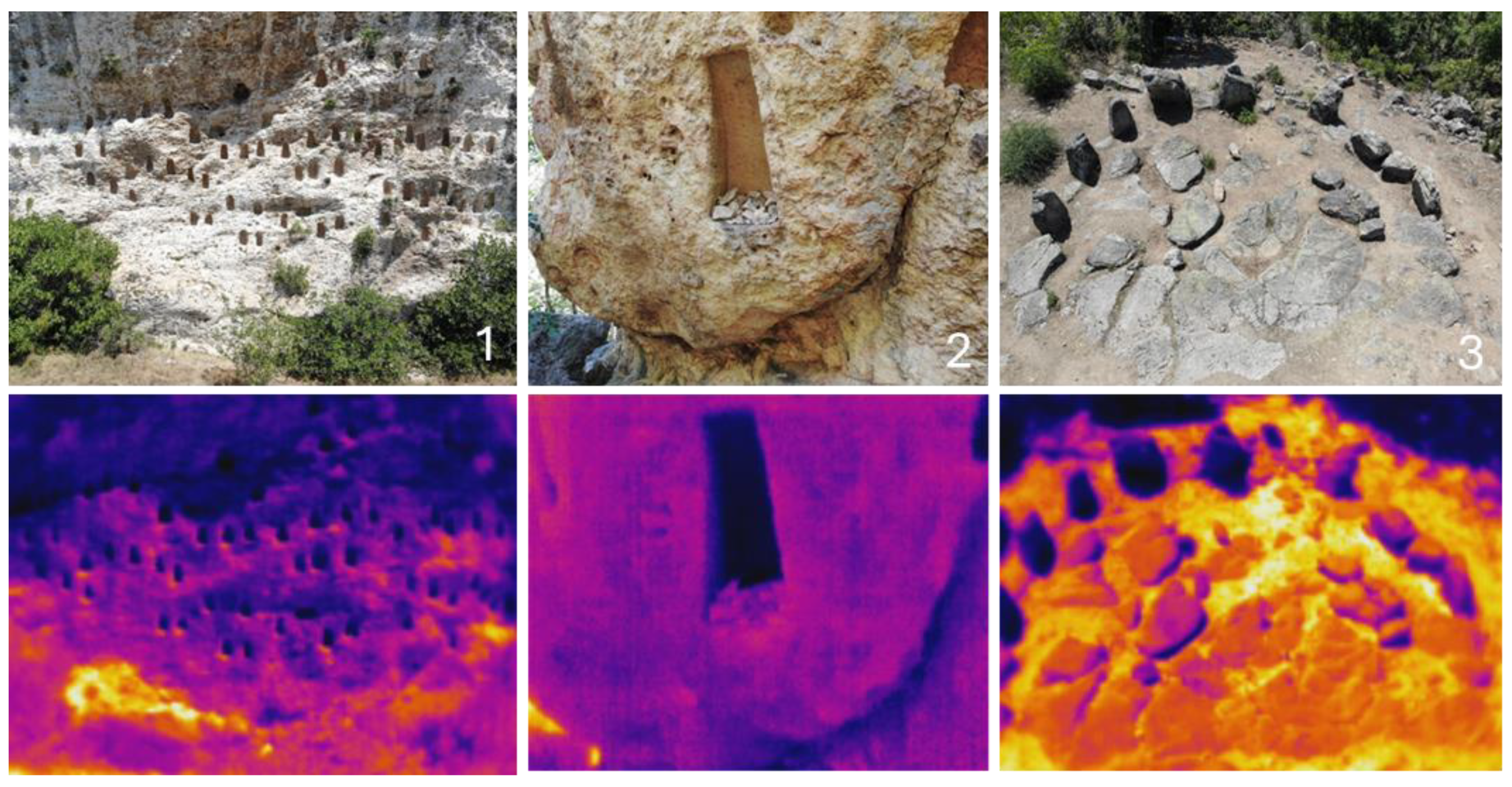
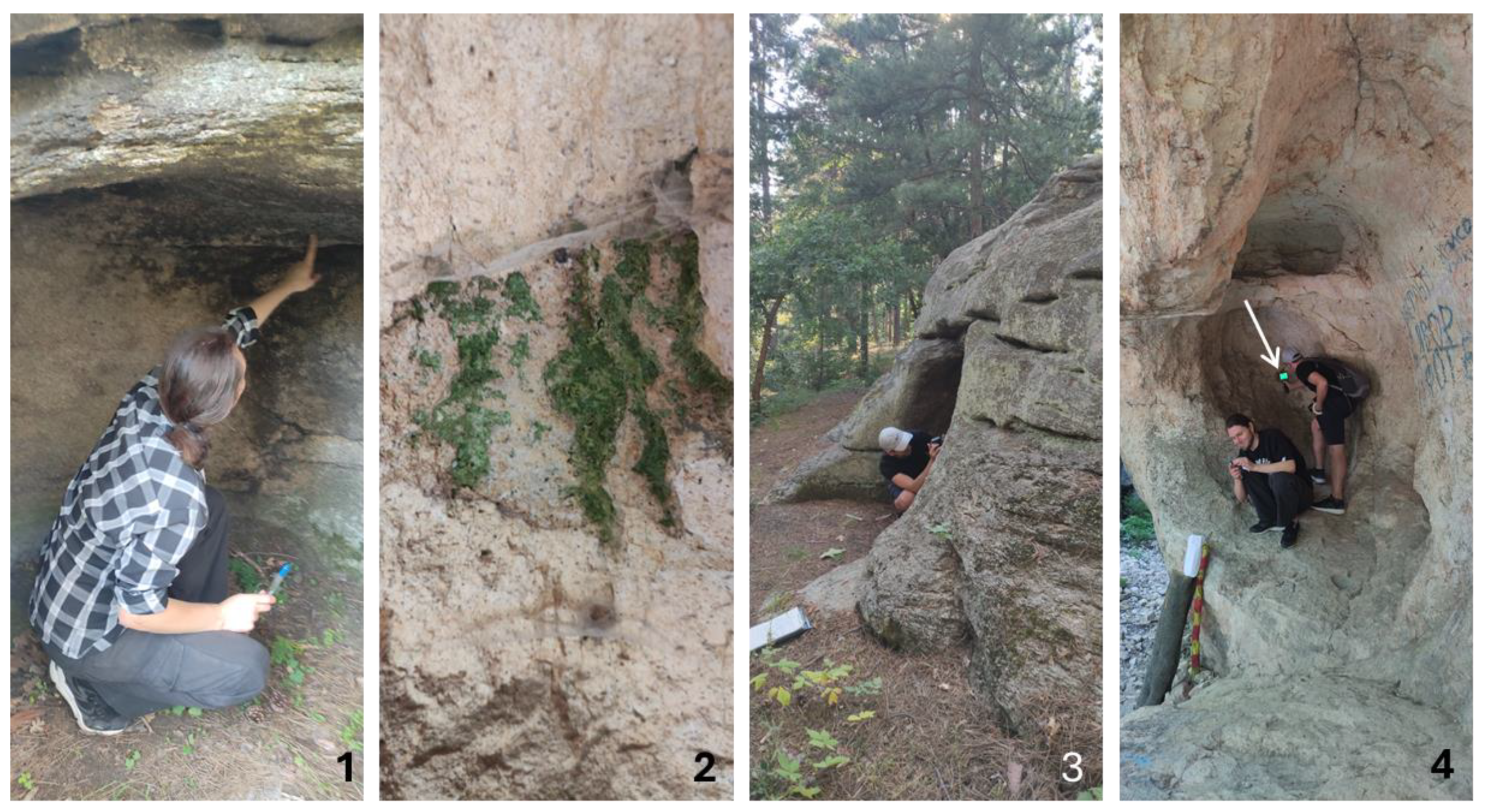
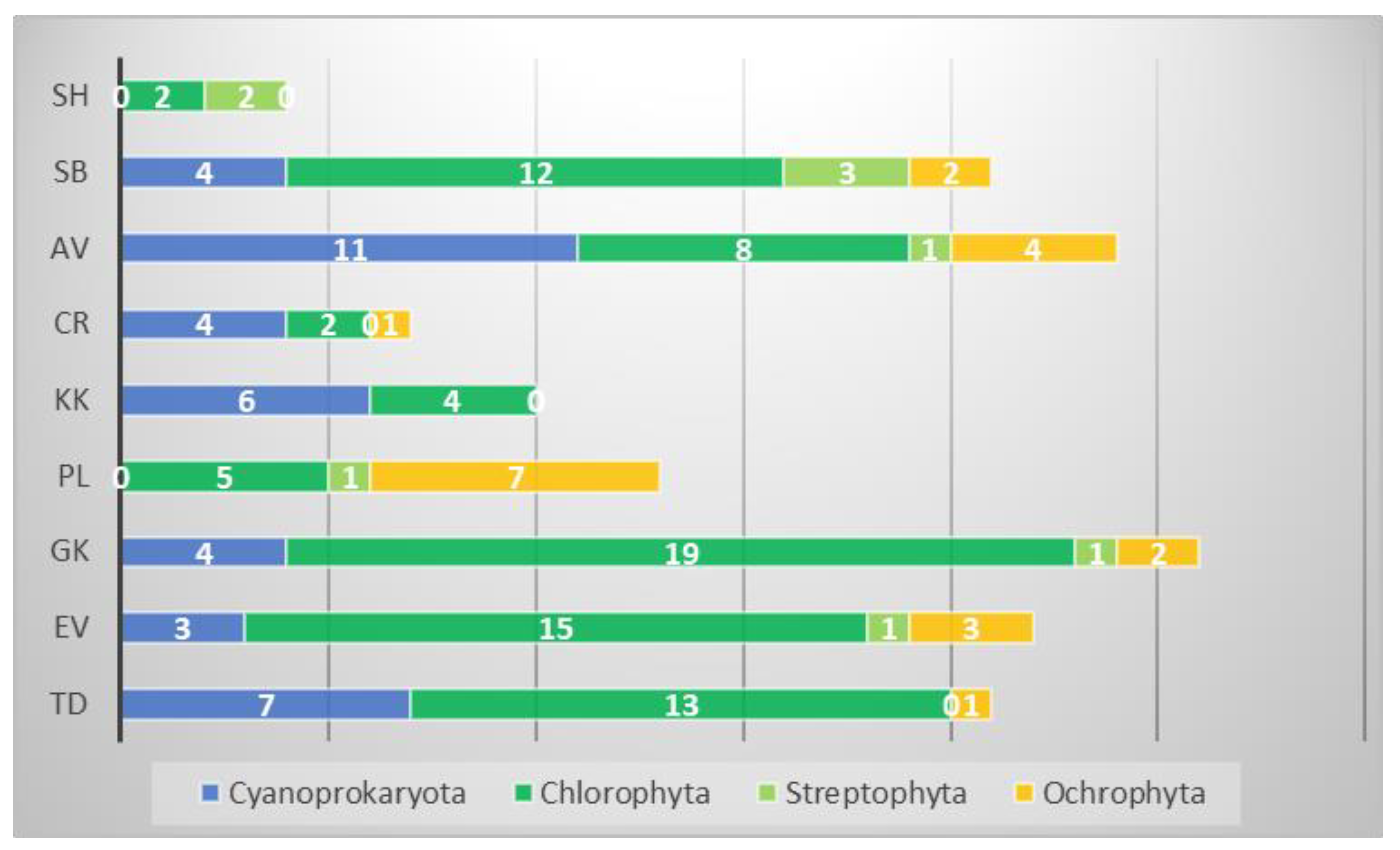

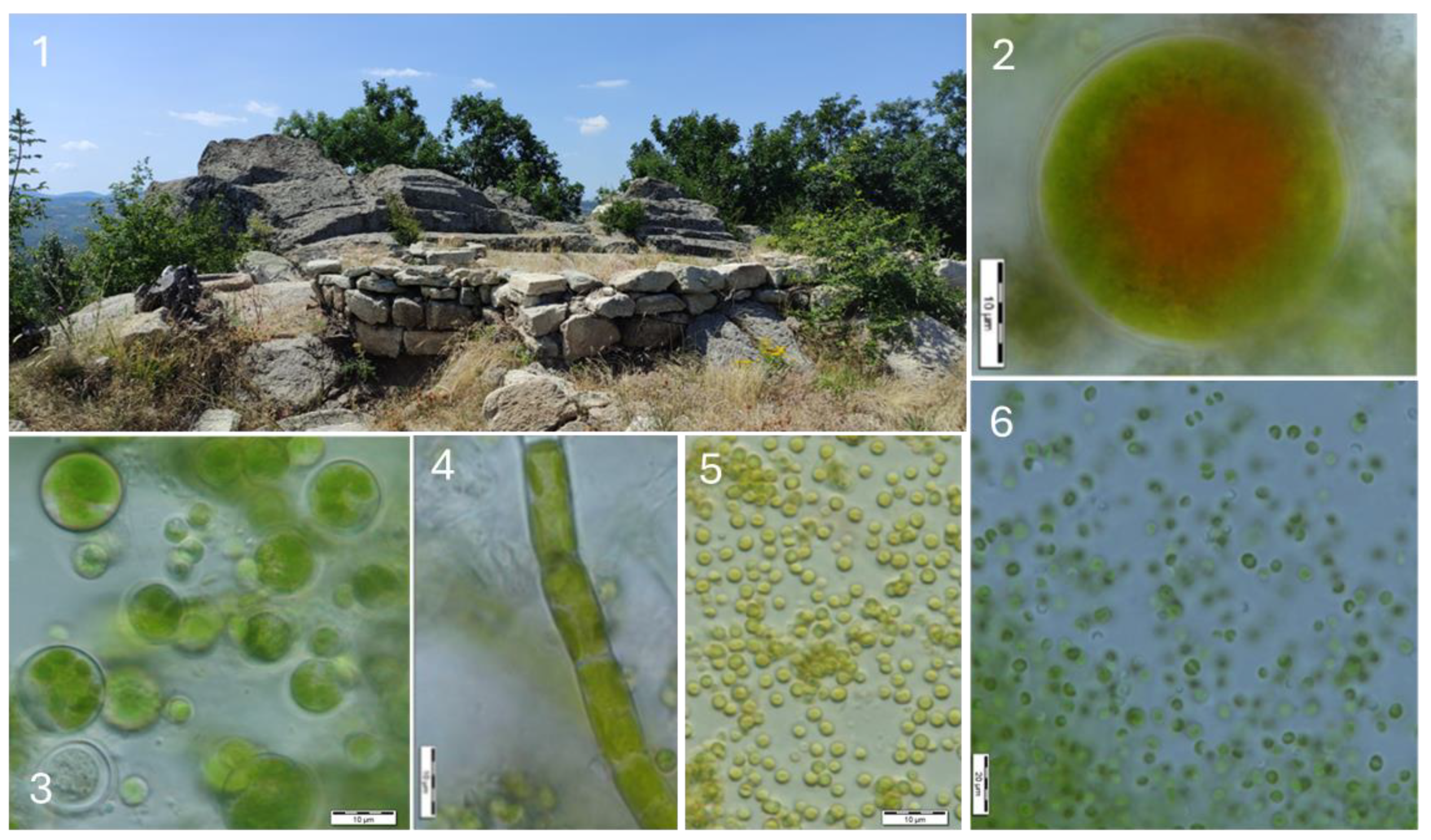




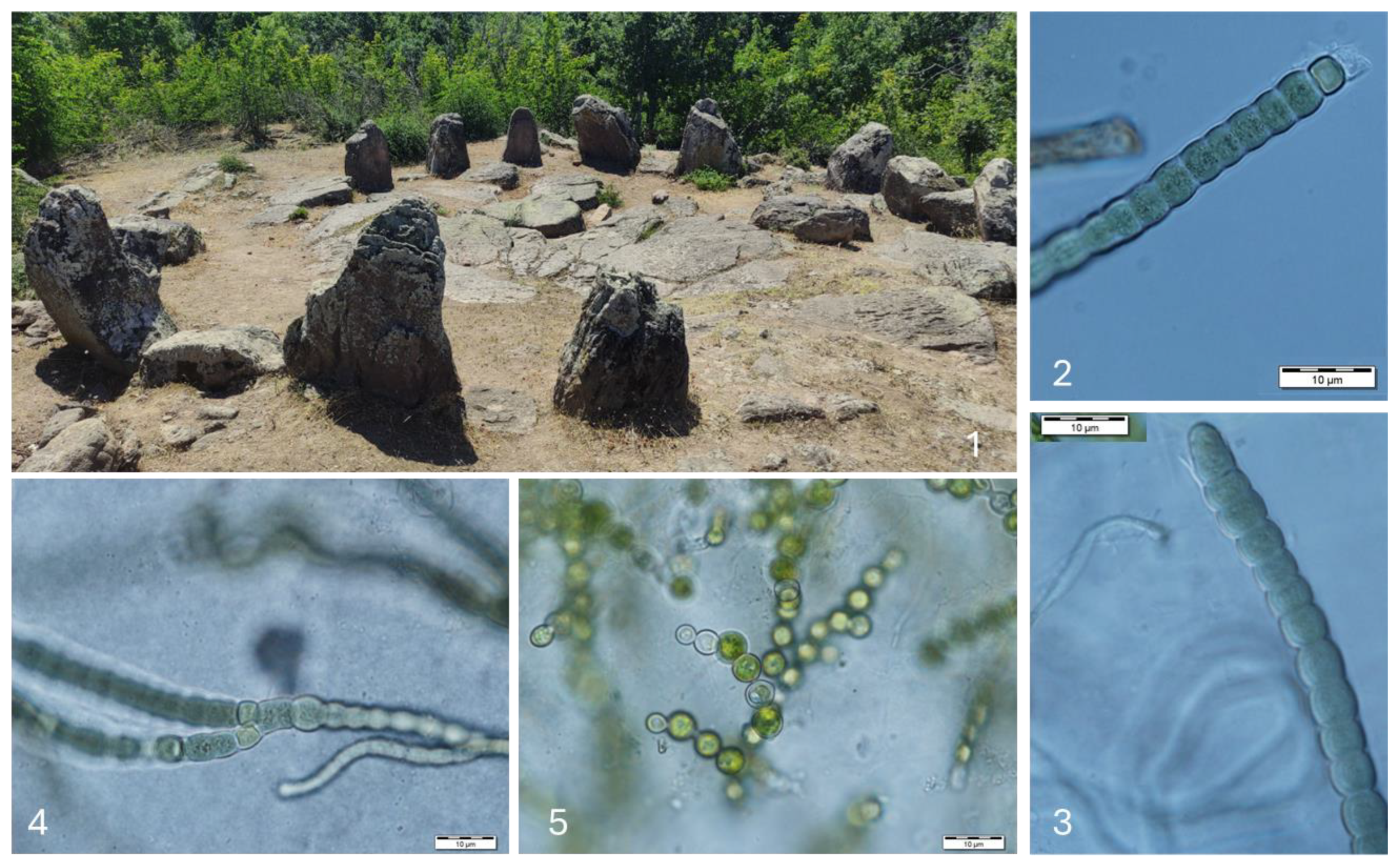
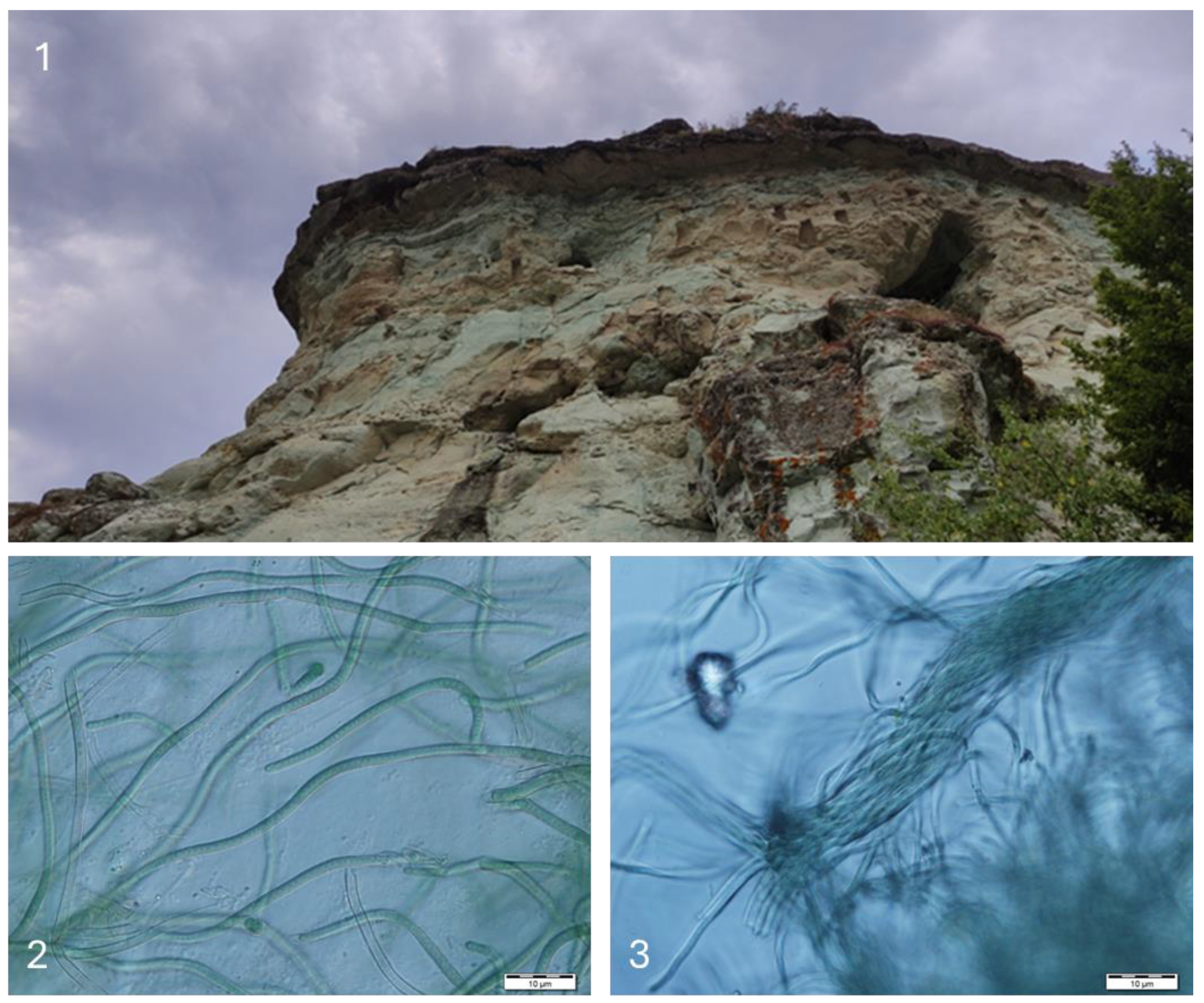
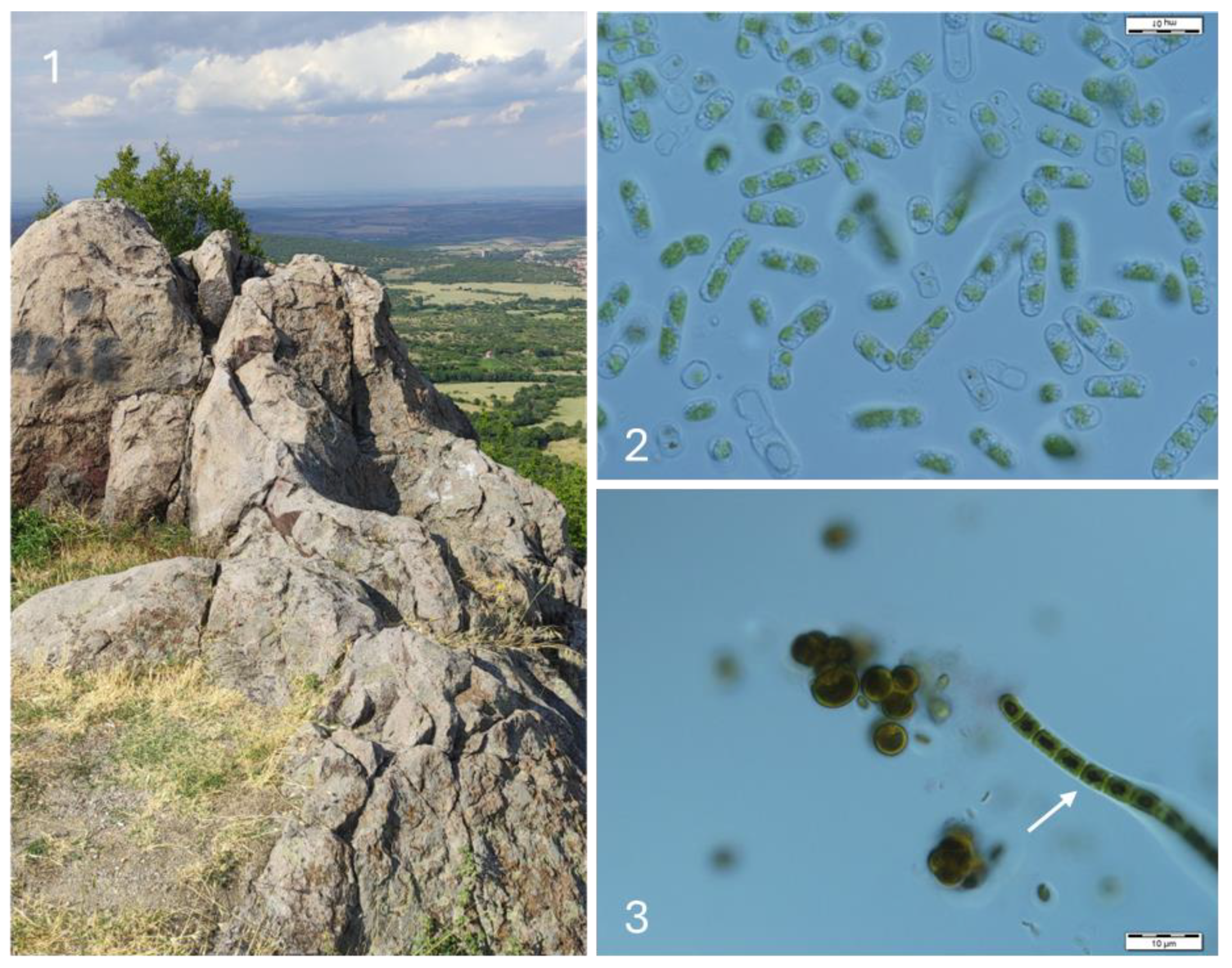
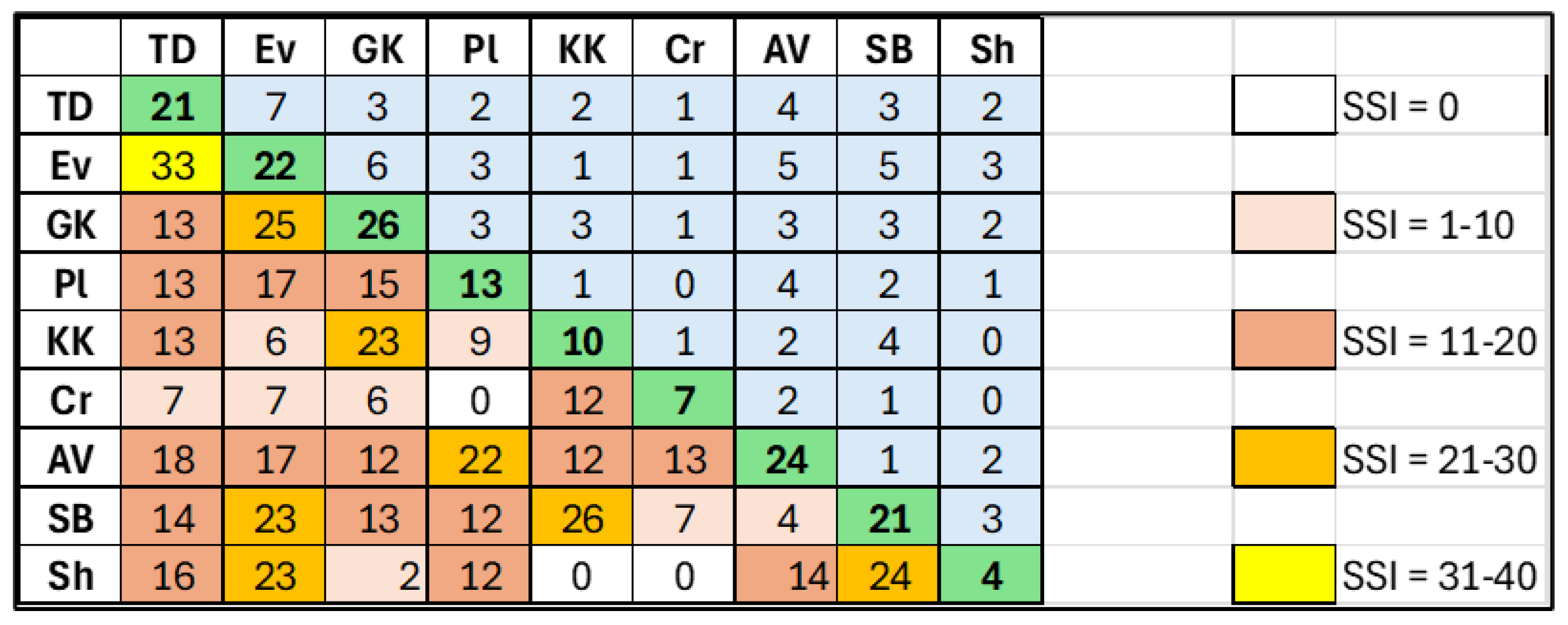
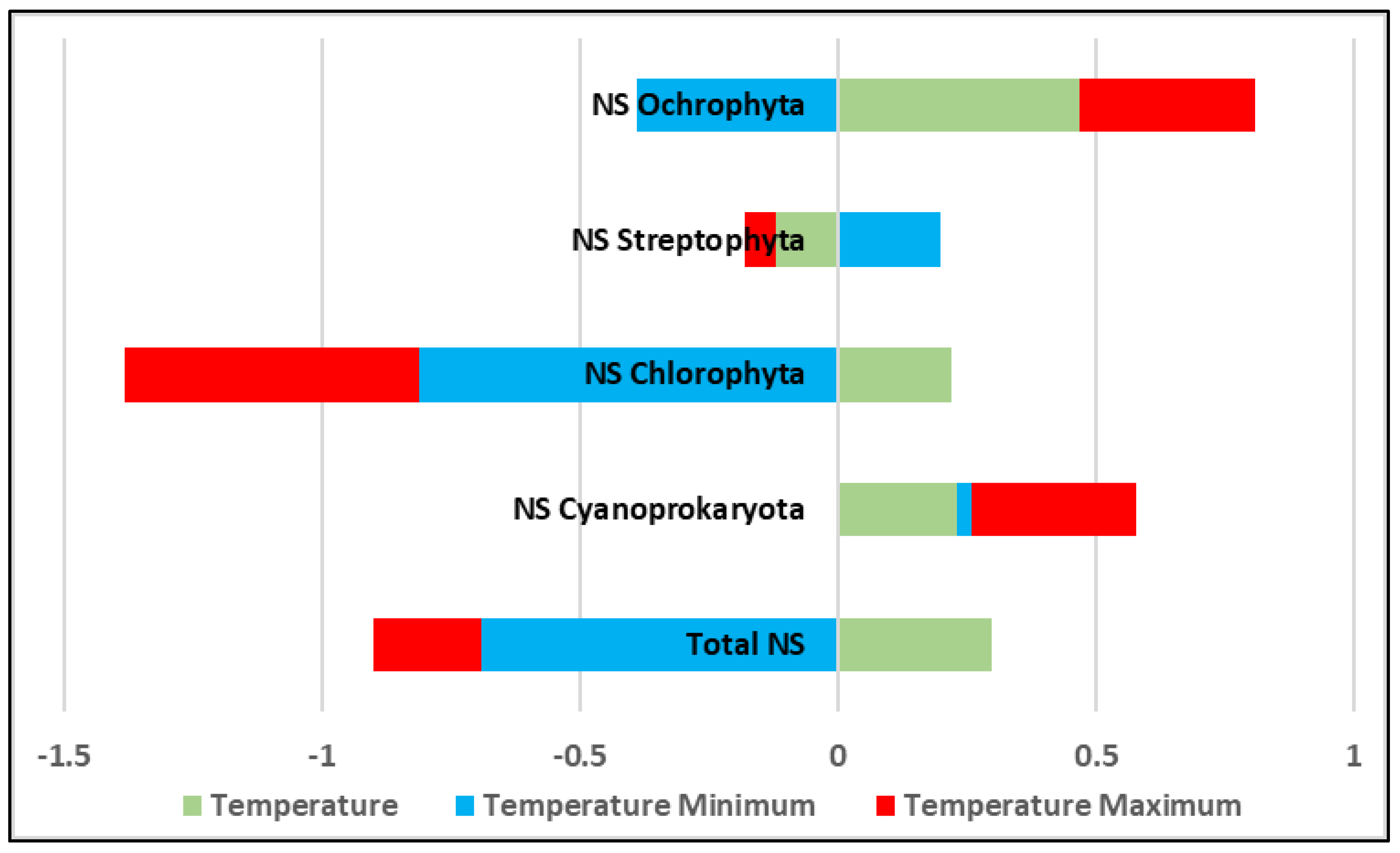
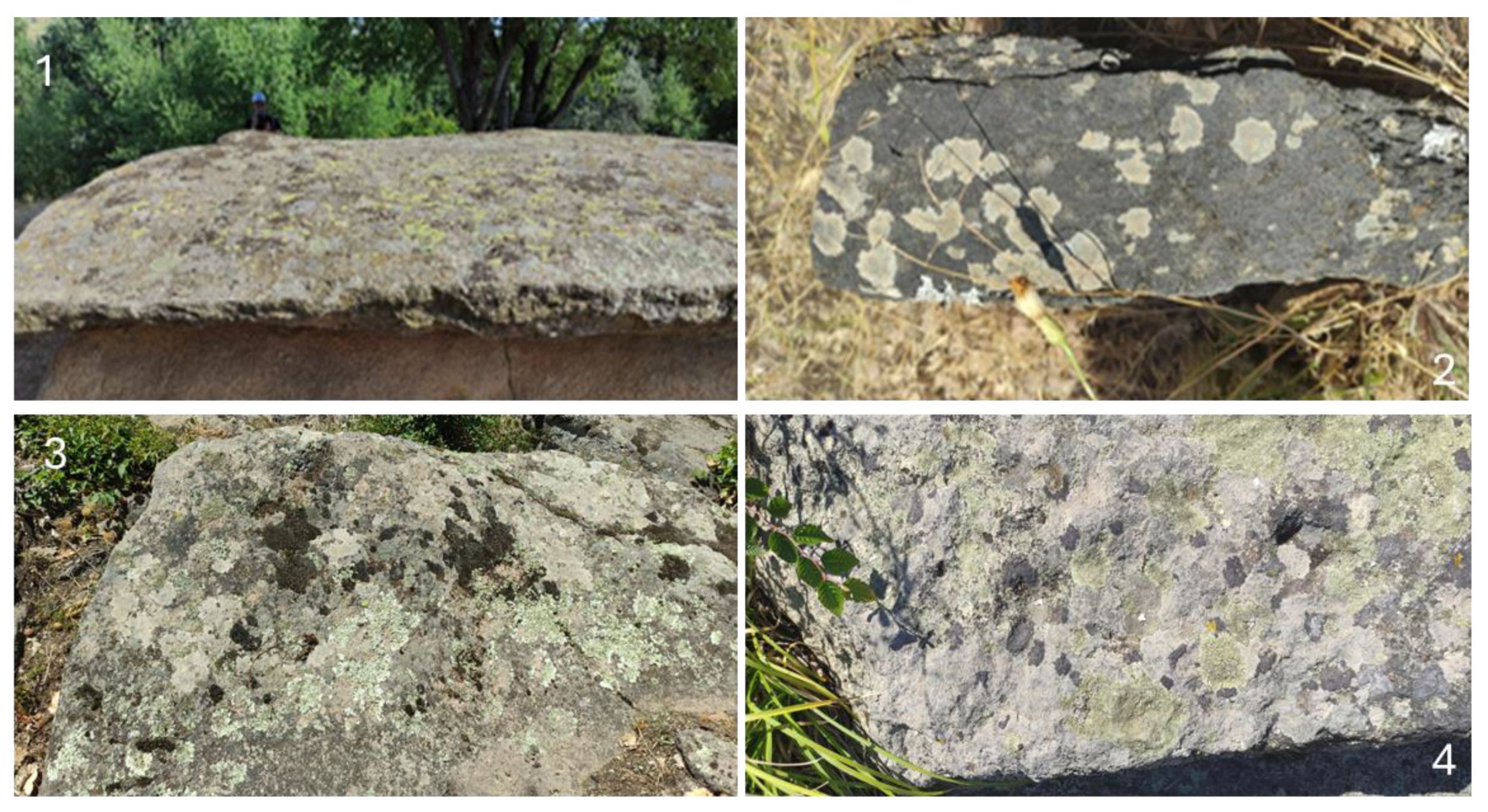
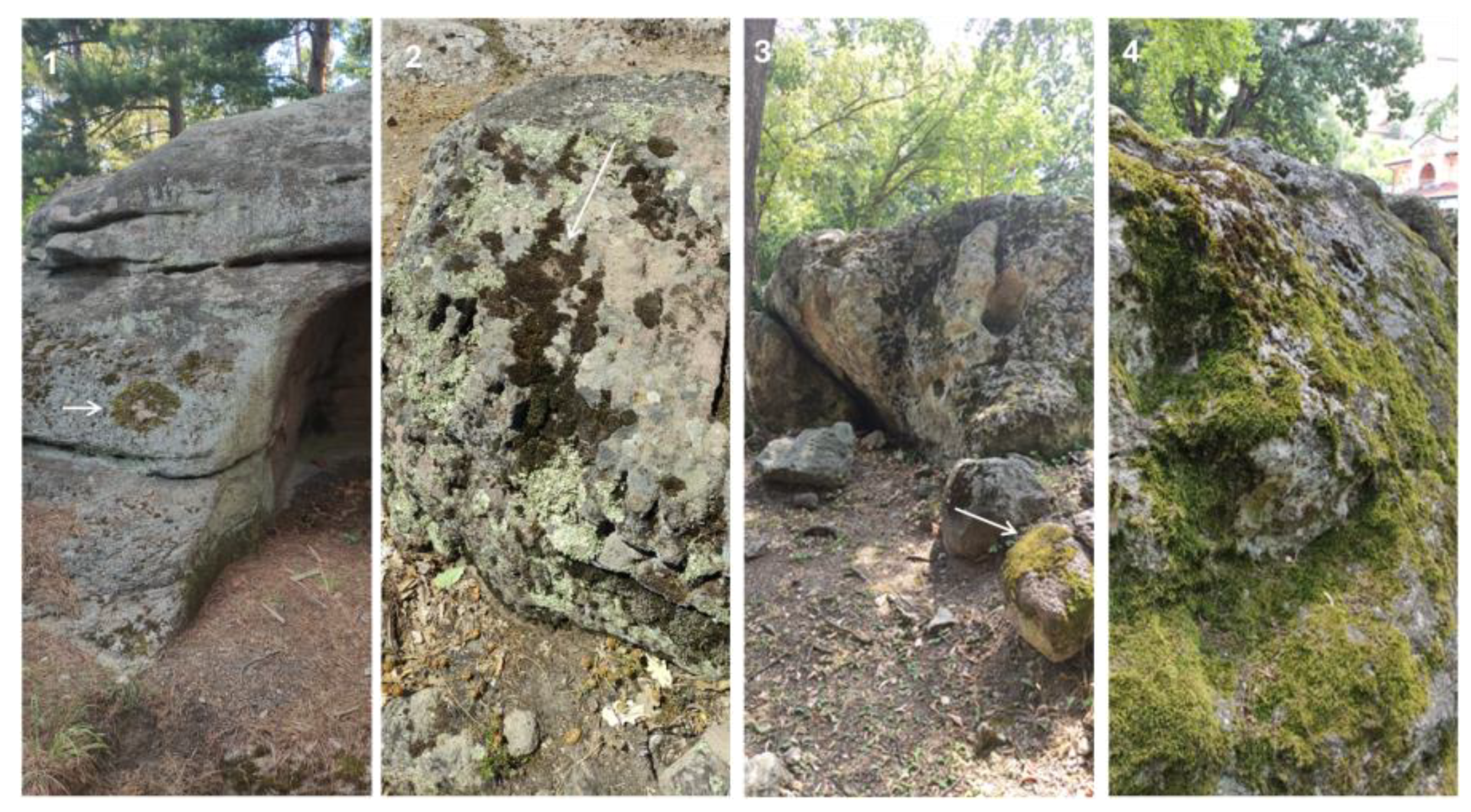

| Megalith | Geographic Coordinates | Temperature Range [°C] | NCS |
|---|---|---|---|
| Tsarski Dolmen (=Dolmen Nachovi Chairi) | 42.051401, 26.228585 | 25.0–33.5 | 5 |
| Evdzhika | 42.046864, 26.261856 | 19.8–26.4 | 5 |
| Ancient complex Gluhite Kamuni | 41.727805, 25.955231 | 18.1–27.2 | 15 |
| Plevun | 41.481050, 26.004420 | 25.0–42.0 | 3 |
| Kovan Kaya | 41.617610, 25.722950 | 31.1–32.2 | 2 |
| Cromleh | 41.681972, 25.812750 | 32.0–47.7 | 2 |
| Ancient complex Angel Voyvoda | 41.833155, 25.262709 | 28.4–49.6 | 9 |
| Stupkata na Bogoroditsa | 41.940107, 25.345984 | 31.5–37.9 | 9 |
| Sharapanite | 41.919580, 25.316216 | 32.8–33.5 | 2 |
| Species/Megaliths | TD | Ev | GK | Pl | KK | Cr | AV | SB | Sh | PRAFB |
|---|---|---|---|---|---|---|---|---|---|---|
| CYANOPROKARYOTA | ||||||||||
| Anabaena sp. ster. 1 (?Trichormus sp.) | x | |||||||||
| Anabaena sp. ster. 2 (?Isocystis sp.) | x | |||||||||
| Anabaena sp. ster. 3 | x | [47] | ||||||||
| Aphanocapsa fusco-lutea Hansgirg | x | |||||||||
| Aphanocapsa cf. rivularis (Carmichael) Rabenhorst | x | |||||||||
| Aphanocapsa sp. 1 | x | x | ||||||||
| Aphanocapsa sp. 2 | x | x | ||||||||
| Aphanothece cf. saxicola Nägeli | x | [47,60] | ||||||||
| Aphanothece sp. 1 | x | |||||||||
| Aphanothece sp. 2 | x | x | x | |||||||
| Calothrix sp. juv. (ad Calothrix fusca Bornet and Flahault) | x | |||||||||
| Gloeobacter violaceus Rippka, J. B. Waterbury and Cohen-Bazire | x | x | ||||||||
| Gloeothece confluens Nägeli | x | |||||||||
| Leptolyngbya foveolarum (Gomont) Anagnostidis and Komárek | x | [47] | ||||||||
| Leptolyngbya af. gloeophila (Borzì) Anagnostidis and Komárek | x | |||||||||
| Leptolyngbya cf. subtilissima (Hansgirg) Komárek | x | |||||||||
| Leptolyngbya ‘Albertano-Kovacik green’ 1992 | x | |||||||||
| Leptolyngbya sp. 1 (ad Leptolyngbya compacta Komárek) | x | |||||||||
| Leptolyngbya sp. 2 | x | |||||||||
| Leptolyngbya sp. 3 | x | |||||||||
| Leptolyngbya sp. 4 (? Leiblenia sp.) | x | |||||||||
| Microcoleus vaginatus Gomont | x | [47] | ||||||||
| Nostoc linckia Bornet ex Bornet and Flahault | x | x | x | [47] | ||||||
| Nostoc minutum Desmazières ex Bornet and Flahault | x | |||||||||
| Pseudophormidium hollerbachianum (Elenkin) Anagnostidis | x | [60] | ||||||||
| Schizothrix cf. epilithica (Ercegović) Anagnostidis | x | |||||||||
| Scytonema sp. | x | [47] | ||||||||
| Stigonema cf. hormoides Bornet and Fhault | x | x | x | [47] | ||||||
| Symploca cf. dubia Gomont (?Leptolyngbya sp.) | x | x | ||||||||
| CHLOROPHYTA | ||||||||||
| Apatococcus lobatus (Chodat) Petersen | x | x | x | x | x | [31,61,62,63] | ||||
| Chlorella vulgaris Beijerinck | x | [47,60,62,63] | ||||||||
| Chlorella sp. | x | |||||||||
| Chloroidium ellipsoideum (Gerneck) Darienko and al. | x | x | x | x | x | [47,48,49,50,51,52,53,54,55,56,57,58,59,60,61,63] | ||||
| Choricystis parasitica (Brandt) Pröschold and Darienko | x | x | x | [60] | ||||||
| Chromochloris zofingiensis (Dönz) Fucíková and Lewis | x | [63] | ||||||||
| Coccomyxa subglobosa Pascher | x | x | x | |||||||
| Coelastrella terrestris (Reisigl) Hegewald and Hanagata | x | x | [60,64] | |||||||
| Coenobotrys gloeobotrydiformis (Reisigl) Kostikov and al. | x | [60,63] | ||||||||
| Desmococcus olivaceus (Persoon ex Acharius) Laundon | x | [61,62,63,65] | ||||||||
| Deuterostichococcus tetrallantoideus (Kol) Pröschold and Darienko | x | |||||||||
| Edaphochlorella mirabilis (Andreeva) Darienko and Pröschold | x | x | [63] | |||||||
| Elliptochloris bilobata Tschermak-Woess | x | [60] | ||||||||
| Elliptochloris subsphaerica (Reisigl) Ettl and Gärtner | x | x | [63] | |||||||
| Eubrownia aggregata (R. M. Brown and Bold) Shin Watanabe and Lewis | x | |||||||||
| Hemichloris polyspora Tschermak-Woess, Hua, Gärtner and Hesse | x | |||||||||
| Lobosphaera undulata (Shin Watanabe) Ettl and Gärtner | x | |||||||||
| Lobosphaeropsis lobophora (Andreeva) Ettl and Gärtner | x | x | x | [63] | ||||||
| Monoraphidium nanum (Ettl) Hindák | x | |||||||||
| Muriella decolor Vischer | x | |||||||||
| Muriella terrestris J. B. Petersen | x | x | ||||||||
| Mychonastes homosphaera (Skuja) Kalina and Puncochárová | x | x | [61,62,63,66,68] | |||||||
| Neocystis brevis (Vischer) Kostikov and Hoffmann | x | |||||||||
| Parachlorella kessleri (Fott and Nováková) Krienitz and al. | x | |||||||||
| Pleurastrum minutum (Starr) Sciuto and al. | x | x | x | |||||||
| Printzina lagenifera (Hildebrand) Thompson and Wujek | x | |||||||||
| Pseudodictyochloris multinucleata (Broady) Ettl and Gärtner | x | x | [60,66,67] | |||||||
| Pseudostichococcus monallantoides var. exiguus (Gerneck) Pröschold and Darienko | x | [63] | ||||||||
| Radiococcus bilobatus (Broady) Kostikov and al. | x | |||||||||
| Scotiella tuberculata Bourrelly | x | |||||||||
| Sphaerococcomyxa olivacea (Petersen) Kostikov and al. | x | x | x | |||||||
| Stichococcus bacillaris Nägeli | x | x | x | x | x | x | x | x | [47,60,62,63,65,66,69] | |
| Stichococcus chlorelloides Grintzesco and Ș. Péterfi | x | |||||||||
| Stichococcus minutus Grintzesco and Ș. Péterfi | x | x | [60,63,65] | |||||||
| Stichococcus mirabilis Lagerheim | x | x | x | |||||||
| Tetracystis pulchra R. M. Brown and Bold | x | x | ||||||||
| Trebouxia sp. (ad Asterochloris excentrica (Archibald) Skaloud and Peksa) | x | [47,61] | ||||||||
| Trentepohlia arborum (Agardh) Hariot | x | x | x | |||||||
| Trentepohlia jolithus (Linnaeus) Wallroth | x | [47] | ||||||||
| Trentepohlia cf. jucunda (Cesati) Hariot | x | |||||||||
| Uvulifera mucosa (Broady and Ingerfeld) Molinari | x | |||||||||
| STREPTOPHYTA | ||||||||||
| Klebsormidium crenulatum (Kützing) Lokhorst | x | |||||||||
| Klebsormidium dissectum (Gay) Ettl and Gärtner | x | x | [60,62,70,71] | |||||||
| Klebsormidium flaccidum (Kützing) Silva, Mattox and Blackwell | x | x | [47,60,63,71] | |||||||
| Klebsormidium cf. flaccidum (Kützing) Silva, Mattox, and Blackwell | x | |||||||||
| Klebsormidium klebsii (Smith) Silva, Mattox and Blackwell | x | x | x | [63,69] | ||||||
| OCHROPHYTA | ||||||||||
| Botrydiopsis sp. | x | |||||||||
| Chlorellidium astigmatum Schwarz | x | |||||||||
| Chloridella minuta Gayral and Mazancourt | x | x | ||||||||
| Chlorobotrys gloeothece Pascher | x | |||||||||
| Ellipsoidion perminimum Pascher | x | x | ||||||||
| Gloeobotrys piriformis Reisigl | x | |||||||||
| Gloeobotrys terrestris Reisigl | x | |||||||||
| Heterococcus anguinus Pitschmann | x | |||||||||
| Monodus guttula Pascher | x | |||||||||
| Navicula sp. s.l. | x | [47] | ||||||||
| Pinnularia sp. | x | |||||||||
| Pleurochloris commutata Pascher | x | x | x | |||||||
| Tribonema aequale Pascher | x | |||||||||
| Tribonema minus (Wille) Hazen | x | |||||||||
| Vischeria magna (Petersen) Kryvenda and al. | x | [60,63,66,72] | ||||||||
| Vischeria stellata (Chodat) Pascher | x | [60,63,66,69,72,73] |
Disclaimer/Publisher’s Note: The statements, opinions and data contained in all publications are solely those of the individual author(s) and contributor(s) and not of MDPI and/or the editor(s). MDPI and/or the editor(s) disclaim responsibility for any injury to people or property resulting from any ideas, methods, instructions or products referred to in the content. |
© 2024 by the authors. Licensee MDPI, Basel, Switzerland. This article is an open access article distributed under the terms and conditions of the Creative Commons Attribution (CC BY) license (https://creativecommons.org/licenses/by/4.0/).
Share and Cite
Stoyneva-Gärtner, M.; Androv, M.; Uzunov, B.; Ivanov, K.; Gärtner, G. Algal Biodiversity of Nine Megaliths in South-East Bulgaria. Life 2024, 14, 948. https://doi.org/10.3390/life14080948
Stoyneva-Gärtner M, Androv M, Uzunov B, Ivanov K, Gärtner G. Algal Biodiversity of Nine Megaliths in South-East Bulgaria. Life. 2024; 14(8):948. https://doi.org/10.3390/life14080948
Chicago/Turabian StyleStoyneva-Gärtner, Maya, Miroslav Androv, Blagoy Uzunov, Kristian Ivanov, and Georg Gärtner. 2024. "Algal Biodiversity of Nine Megaliths in South-East Bulgaria" Life 14, no. 8: 948. https://doi.org/10.3390/life14080948









